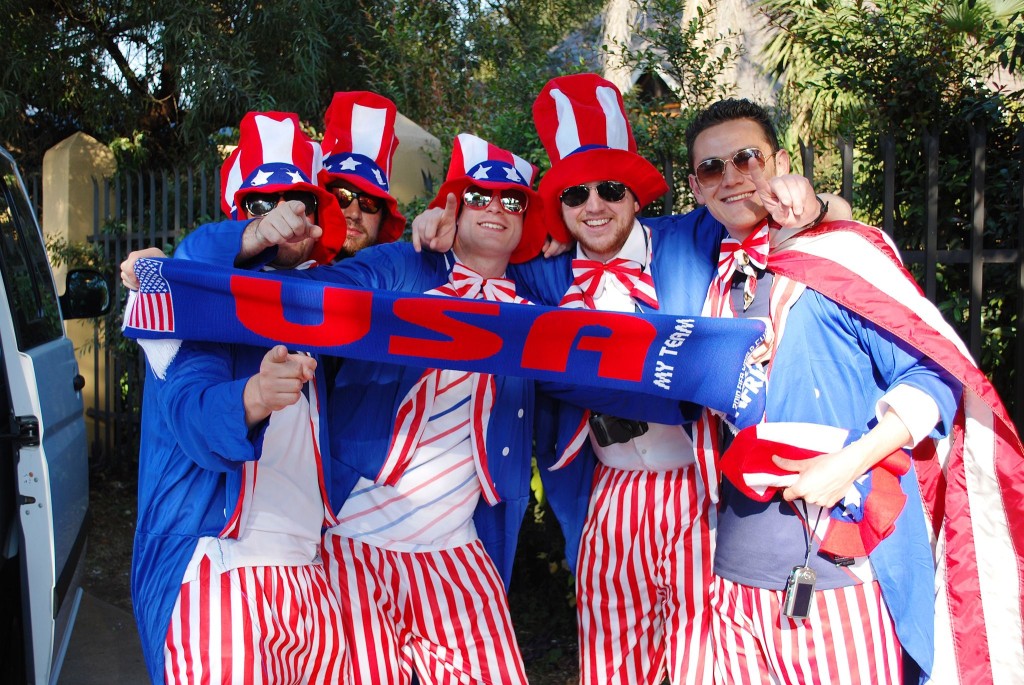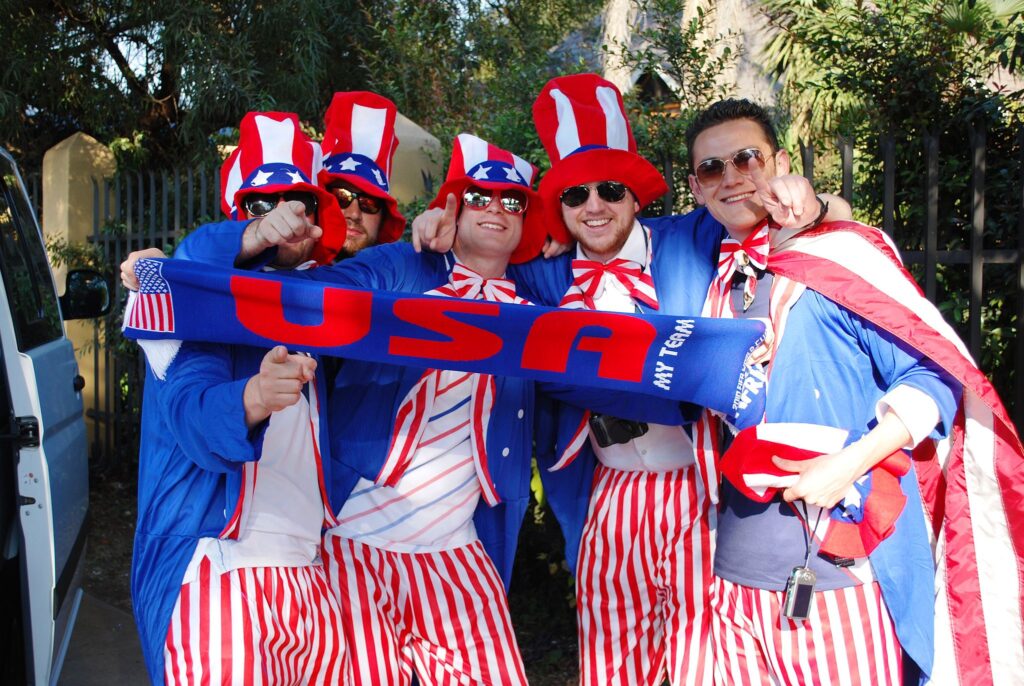
Every four years during the World Cup, the US press fixates collectively on the “will it/won’t it” question of soccer’s future. Each World Cup seems to bring higher TV ratings and more water cooler conversations than the last. Soccer optimists, imbued with fresh hope by scenes of fervent US supporters with painted faces and patriotic apparel, proclaim that soccer is here to stay in America.
Now that the US out of the 2014 World Cup after a 2-1 loss to Belgium, will this year be any different? Have the past few weeks been a sign that soccer will someday find a home as a mainstay of US sports, or are they just part of the same ebb-and-flow pattern that we see every four years?
First, a by-the-numbers look at this year’s World Cup viewership in the US. According to Variety, the US-Portugal game drew 18.20 million viewers on ESPN; the US-Belgium game drew 16.49 million. Those two games were the two most watched US World Cup telecasts in American history. Through the Round of 16, ESPN and ABC averaged 4.08 million viewers – a record audience for the World Cup, up 44% from 2010 and 122% from 2006. According to the New York Post, WatchESPN (ESPN’s online viewing service) attracted an average audience of 1.1 million viewers per minute during this World Cup.
These numbers are to be expected. Aside from reasons related to the sport itself, this year’s record numbers likely have several major contributing factors. According to the World Bank, the number of internet users in the US grew by 10.1 million from 2012 to 2013. According to comScore, the number of smartphone users in the US grew 7% from October 2013 to January 2014. Twitter’s userbase alone grew from 183 million at the end of 2013 to an estimated 227 million at the end of 2014 (estimated by CNET). The World Bank pegs the annual growth rate of the US population at 0.74% per year.
These greater numbers of internet users, smartphone users, and social media users mean that more people will hear about the World Cup and share news with their friends by roughly an order of magnitude more than they did during the previous World Cup. I am not making any statistical conclusions here, but I do think it’s fair to say that articles and opinions proclaiming soccer’s inevitable destiny as a major US sport need to be taken with a grain of salt if they tout World Cup viewing statistics as conclusive evidence.
Furthermore, the World Cup takes place during a dry period for other US sports. The NFL is at its least interesting (long past the conclusion of the postseason and about a month past the draft), the NBA has also put its postseason and draft in the rearview mirror, the drama of the NHL Stanley Cup has ended, and the Olympics is long over. The only major competing sport is MLB baseball, which is in the midst of its regular season. Additionally, summer brings a dearth of active TV shows, meaning that Americans have even less to watch.
What about factors related to soccer itself? Are Americans growing more accepting of a sport fundamentally different from the ones it already treasures? This question is tough to answer. Other than a few minor rule changes, soccer is the same as it was four years ago. All of the reasons provided by soccer critics as to why the sport will not catch on in the US (infrequent scoring, too many fake injuries, overly subjective officiating, and lack of sudden death overtime) are just as valid or invalid as they were four years ago. Shifting American sentiment toward soccer would be a result of externalities, and that discussion is best left for another time.
Perhaps one reason is a lack of initiative by the MLS. Recent years have seen the league take an aggressive approach to bolstering soccer’s popularity. According to The Economist, although average MLS attendance per game is down from 2013, it surpassed both the NBA and NHL with 18,600 spectators per match (although both of those leagues play considerably more games per season, making each game less appealing as an excursion). According to Forbes, the average MLS franchise is now worth $103 million, up more than 175% over the past five years. The league had 13 clubs in 2007 and will have 21 by next year. This year’s US World Cup team had ten players from the MLS compared to just four in 2010. Finally, the MLS signed a new eight-year deal worth an estimated $90 million per season that will result in more of its games being broadcast on more TV channels.
My theory is that Americans simply enjoy coming together to celebrate our national pride. Other than the Olympics, no major sporting events have the ability to unite entire countries in support of the same team. Take the support of the Iranian national team this year as an example. Following the 1979 Islamic Revolution, the Iranian government banned women from entering most sporting events because they deemed the enjoyment of sports by mixed crowds un-Islamic. This year, according to CNN, Tehran’s billboards advertising the World Cup featured only men, and state TV stations used a delay of several seconds to censor images of racy female fans so that viewers at home wouldn’t learn to accept mixed crowds. Nonetheless, some restaurants in Iran defied a national ban on broadcasting the World Cup this year, and men and women enjoyed the games together in public. Does this increased support from the female population indicate that soccer is growing in popularity in Iran? No – it shows that the Iranian people, this year more than ever, are eager to show their nationalism and support gender equality as a reaction to recent actions by the government.
Along the same lines, an ineffective Congress, an inconsistent Supreme Court, and an unpopular president have given US fans an increased longing to show their nationalism in 2014. Most notably, a volatile balance of power on the world stage has left Americans in uncertain territory. Both Russia’s aggression against Ukraine and ISIS’s first steps toward forging an Islamic state in the Middle East this year have spurred a growing national desire to display a uniquely American style of patriotism. Especially in the context of the World Cup, with competition unfolding at an international scale, patriotism is linked more to foreign policy than it is to domestic issues.
Perhaps the recent changes rolled out by the MLS are making a greater immediate impact on soccer than I’m giving them credit for, but I believe that the outpouring of US support for the Men’s National Team this year was more a result of our desire to be patriotic than it was a precursor to soccer’s rise to American prominence. Now more than ever, Americans are eager to come together and celebrate their national pride.
The views expressed by the author do not necessarily reflect those of the Glimpse from the Globe staff, editors, or governors.







